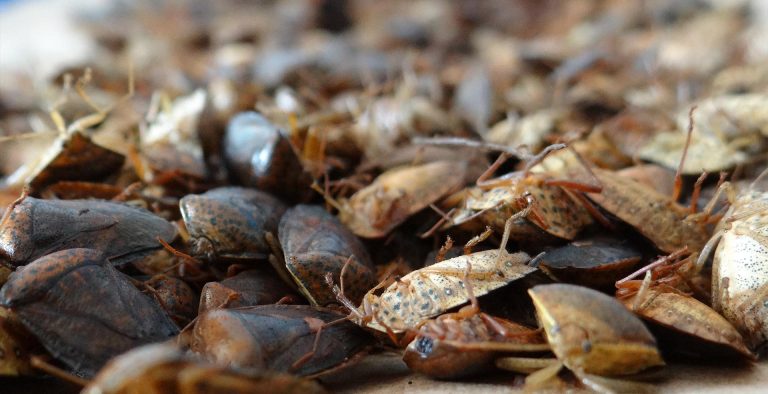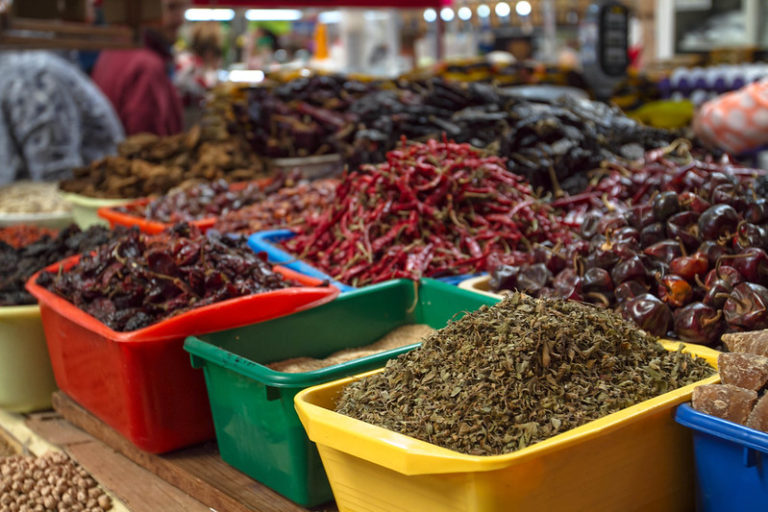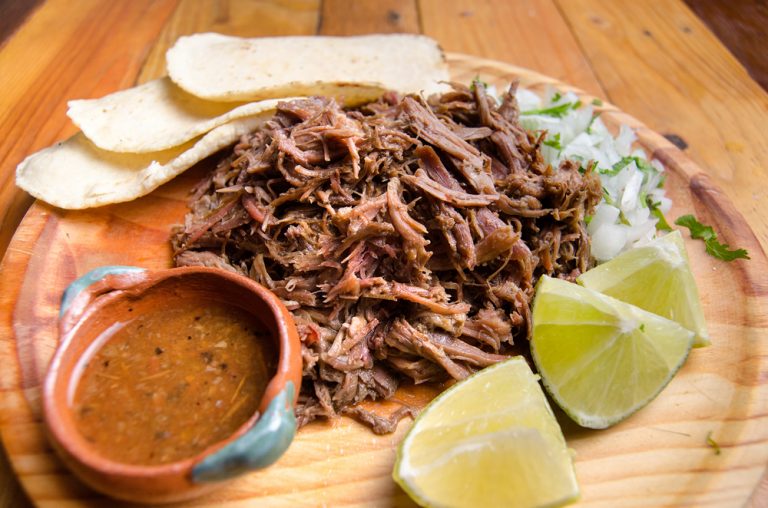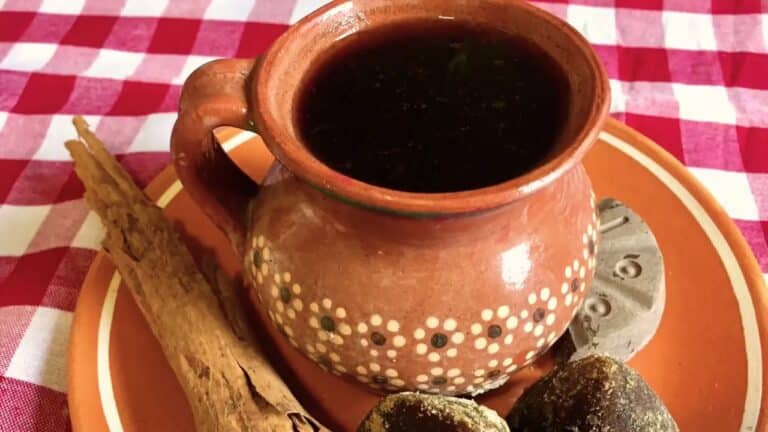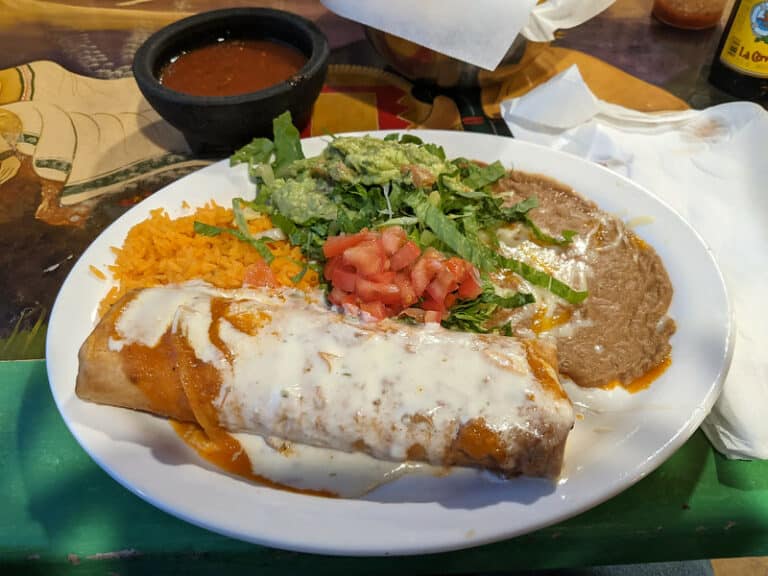12 Exquisite Non-Alcoholic Mexican Drinks You Can’t Miss
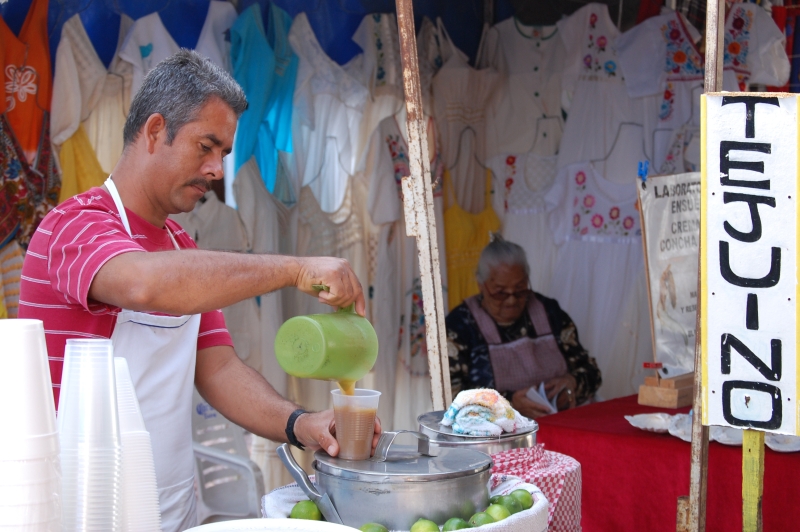
Mexico has numerous non-alcoholic drinks for all tastes thanks to the enormous variety of fruits, leaves, flowers, roots, bark, and other natural ingredients used for their preparation.
In today’s post, I’ll review the most popular Mexican alcohol-free beverages for all tastes.
The best part is that they’re pretty easy to make at home with basic ingredients. So take note.
Top 12 non-alcoholic drinks typical of Mexico
1. Agua de Horchata
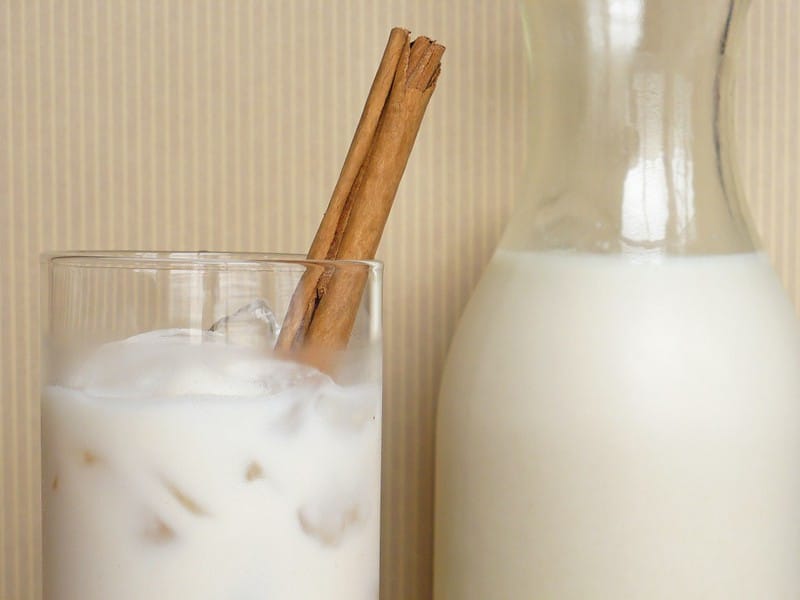
Let’s start with this yummy and traditional non-alcoholic drink: agua de horchata.
This rice-based water is a classic among Mexican non-alcoholic drinks, although it is not exactly known where the term “horchata” comes from.
It is believed to come from the Italian word “orzo,” meaning barley, a cereal that was eventually replaced with rice.
It is not a pre-Hispanic drink because rice arrived in America with the conquistadors.
Horchata water is prepared in Mexico with rice, cinnamon sticks, milk, sugar, and vanilla essence.
Some recipes include coconut, almonds, morro seeds, and condensed milk to make it sweeter.
The artisanal preparation is typical of Tabasco, Veracruz, and the Yucatan Peninsula, which is a usual accompaniment to traditional dishes such as cochinita pibil.
Its high consumption and demand in Mexico led to the appearance of commercial brands.
2. Tascalate
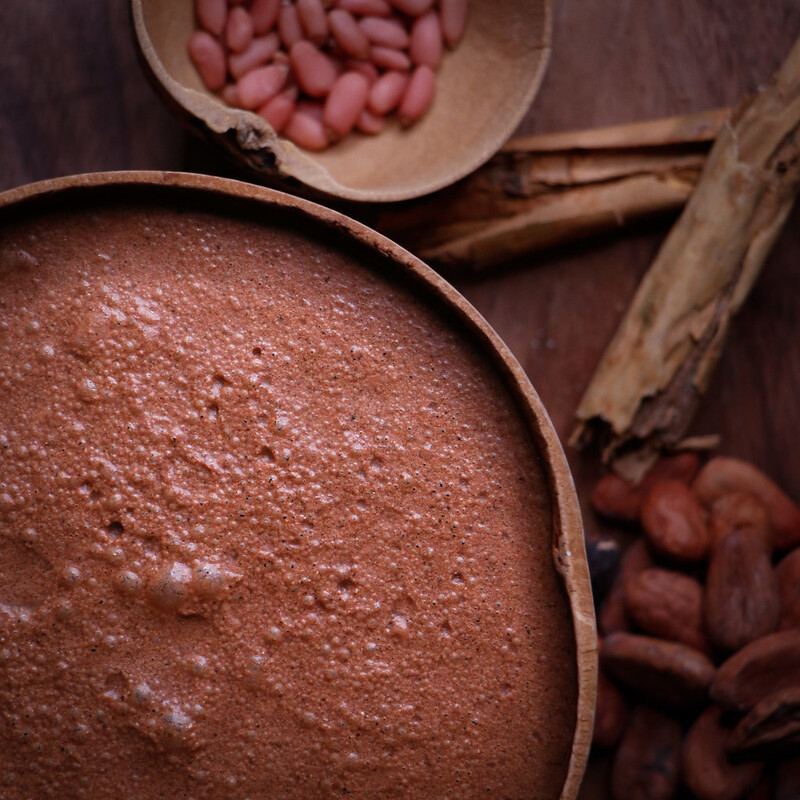
Tascalate is a Pre-Hispanic drink whose first reference dates back to 1566.
The Franciscan missionary and later bishop of Yucatan, Diego de Landa Calderon, mentioned it as a preparation of roasted corn flavored with chocolate and chili, widely consumed in southern Mexico.
Taxcalate or tascalate is popular in Chiapas.
It is prepared by making a fine powder based on toasted and chopped tortillas, cocoa, achiote, ground or powdered cinnamon, and grated piloncillo.
This powder is mixed with water or milk in a pitcher and cooled with ice cubes. It is a refreshing and very nutritious drink.
The pink tascalate powder is sold in packets. It is readily available in the markets in Chiapas, and it is usual to find it prepared in the street.
3. Tejuino
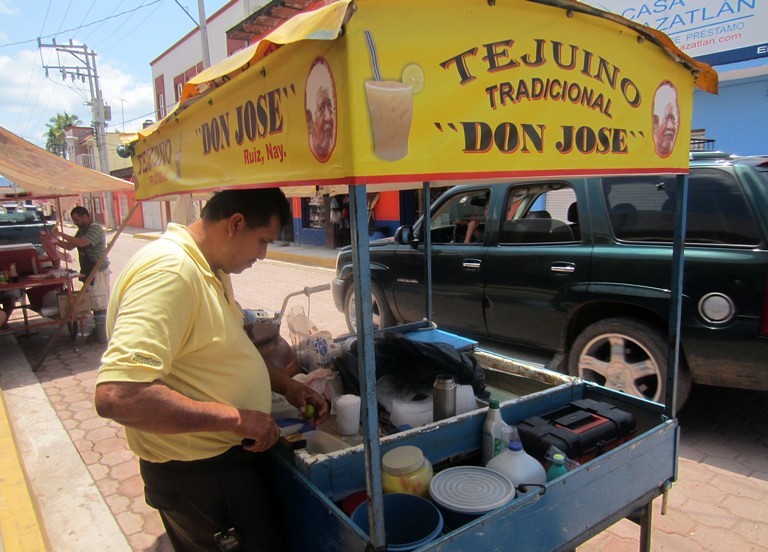
Tejuino is a form of “corn beer” invented by the Indians of northern Mexico.
Its low degree of fermentation makes it a refreshing and almost alcohol-free drink.
The word “tejuino” comes from the Nahua word “tejuin,” which means “beating heart.”
It is prepared with corn dough and piloncillo and subjected to light fermentation for 48 hours.
Tejuino is one of the typical Mexican non-alcoholic drinks served with lime juice, chili, and lime sorbet, adopting a spicy, sweet, sour, and refreshing flavor.
*When the mixture is left to ferment completely, it becomes an alcoholic beverage called tesguino, used by Yaquis, Tarahumaras, Pimas, Tubars, Huicholes, and other Mexican ethnic groups for social and ceremonial purposes.
4. Agua fresca de mamey
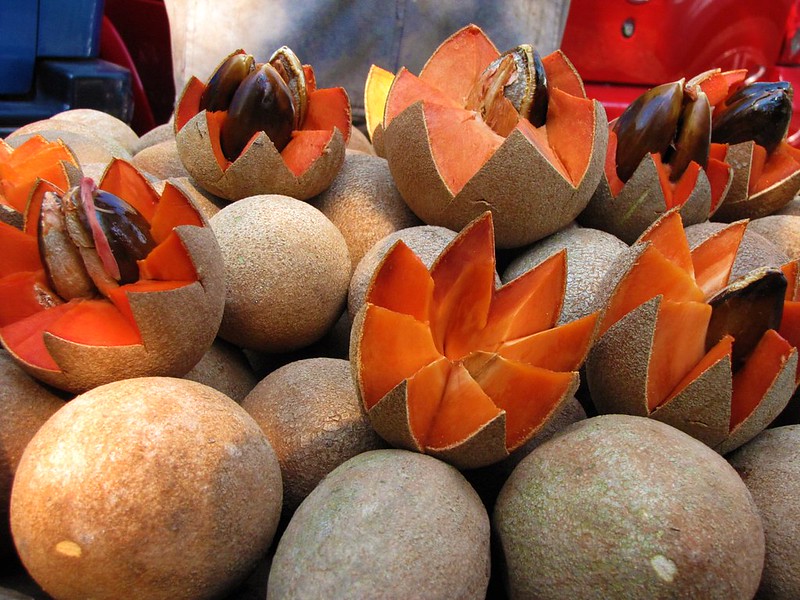
The mamey is a tree species native to the Antilles whose fruit is not of much commercial interest because the fruit takes up to 12 years to flower.
It is a beautiful tree that requires humid and fertile soils.
The fruit, however, has been traditionally consumed in Mexico, central and northern South America.
It grows wild in some Mexican states, especially Chiapas, Veracruz, and Tabasco.
Mamey is used in Mexico in smoothies and makes one of the traditional “Agua Fresca.”
It is rich in vitamin A, iron, and phosphorous, which promotes healthy skin, hair, bones, and vision.
To prepare agua fresca de mamey, blend the chopped fruit with water, lemon, and agave honey. Serve in glasses with ice.
5. Cebadina
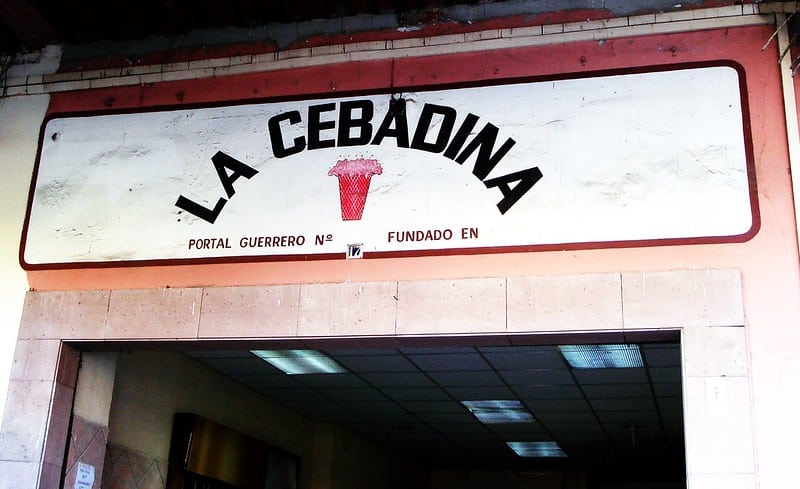
Among the Top non-alcoholic Mexican drinks, this one is typical of León, Guanajuato.
The preparation base is barley flavored and colored with hibiscus flowers and other ingredients.
As the barley is not left to ferment, no alcohol is produced, leaving a refreshing and nutritious drink for the whole family.
It is common to add some bicarbonate to the glass when serving to achieve an effervescent effect.
By drinking it, you will gain the digestive, detoxifying, diuretic, and anti-inflammatory properties of barley, as well as its high fiber content, which in addition to preventing constipation and other intestinal disorders, favors the elimination of cholesterol and other fats.
You will find shops and carts selling red cebadina colored with Jamaica (hibiscus flower) in downtown Leon, Guanajuato.
It is the perfect drink to accompany guacamayas (rolls stuffed with pork rinds), the typical cravings of the people of León.
6. Agua de Jamaica, one of the most traditional non-alcoholic Mexican drinks
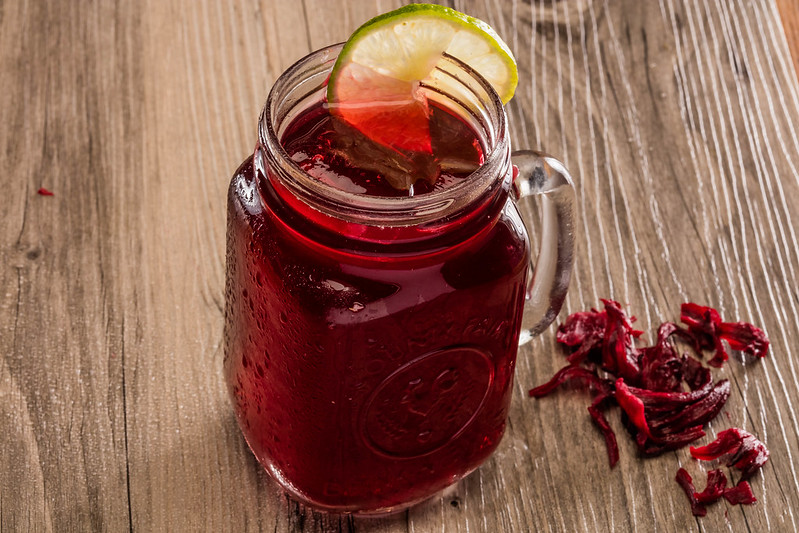
Jamaica water is another classic among non-alcoholic Mexican drinks.
It is prepared with hibiscus flower, a malvaceous plant native to tropical Africa and cultivated in many parts of the world, including Mexico, for its flavor in infusions and medicinal attributes.
In Latin America it is also called Abyssinian rose, red sorrel, rosella, Guinea sour and saril.
Agua de Jamaica is a common accompaniment to meals in Mexico for its refreshing sensation and pleasant taste. I like to add lemon or ginger to the infusion.
You gain its antihypertensive, slightly laxative, and antiparasitic properties by drinking it.
It is believed that the first Mexican place where the flower of Jamaica arrived was the coast of Guerrero, aboard the ships that made the commercial routes from the Philippines and other Asian ports.
Guerrero is the leading producer of hibiscus flowers in Mexico, with plantations of nearly 20 thousand hectares.
7. Tejate
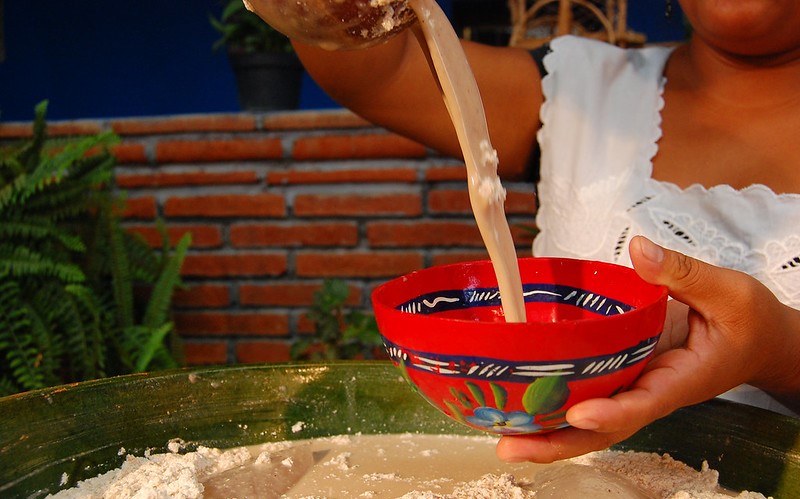
The “drink of the gods” is prepared with cocoa, roasted corn, mamey seeds, and cocoa flower or rosita sweetened with cane sugar.
The corn is boiled in water with ash to loosen the husk, giving the drink a slightly smoky touch.
The cocoa flower or rosita de cacao should not be confused with the blossom of the tree that produces the base fruit of chocolate.
This comes from another bush species that grows in very few Mexican places, one of them the Oaxacan municipality of San Andrés Huayapam.
In the municipal capital of San Andrés Huayapam, the Tejate Fair is held between the end of March and the beginning of April, one of the many national events dedicated to promoting Mexico’s typical non-alcoholic beverages.
The town’s “tejateras” wear their colorful traditional costumes of white blouses and red skirts while preparing and selling Tejate accompanied by tamales, empanadas, memelas, and other regional snacks.
8. Bupu
Bupu is a Zapotec drink highly popular in the Isthmus of Tehuantepec, especially in the Oaxacan city and municipality of Juchitán de Zaragoza.
The regional Zapotecs considered bupu (foam, in Zapotec language) to be the drink of the gods.
According to pre-Hispanic legend, it is believed that the servants prepared it for the exclusive consumption of the Zapotec monarchs before a maiden learned the recipe and made it public.
Its ingredients are cocoa, cinnamon, piloncillo, jasmine flower and mayflower.
The cocoa is roasted on the comal, and all the ingredients are ground to form a paste and left to rest for a day.
Then hot water is added and beaten until a coffee-colored foam is formed.
The bupu is served chilled over a hot bowl of white corn gruel, which produces a delicious mix of flavors and temperatures.
Apart from Oaxaca, it is also prepared in Chiapas, Tabasco, and Veracruz.
9. Pozol
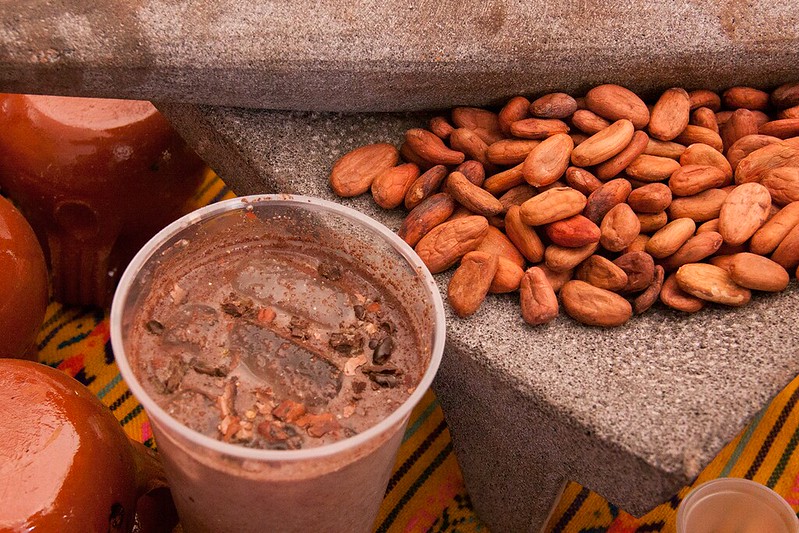
The Spanish conquistadors and missionaries who arrived in Mexico in the 16th century were surprised by the resistance of the indigenous people who, despite not eating well, were able to make long journeys.
Their secret to maintaining energy was a drink prepared with a paste of cocoa and corn: pozol.
William Dampier, a British writer and corsair who visited the Bay of Campeche in the 1670s, was also amazed by the strength that the indigenous travelers achieved by drinking pozol.
The corn is boiled in lime water to loosen the husk. Then, the husked grains are softened with a second boiling.
The cocoa is roasted, ground, and mixed with the corn to make a paste that is fermented in banana leaves for three days to acquire its sour touch.
Finally, it is beaten or liquefied with water.
10. Lagrimas de La Virgen (Virgin’s tears)
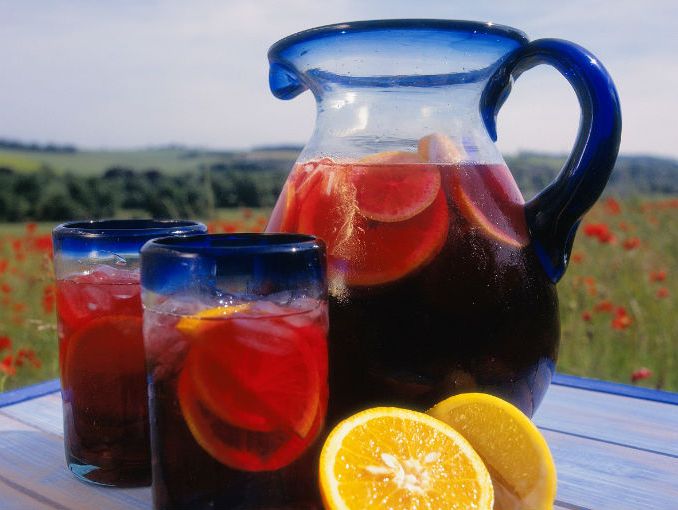
This is another typical drink from Guanajuato created in commemoration of the seven sorrows of Mary, including the crucifixion of Jesus.
Lagrimas de la Virgen has seven ingredients: beet, orange, apple, lettuce, banana, water, and a sweetener (piloncillo or sugar) and is consumed especially on the Friday of Sorrows or Friday of Passion.
When you ask a woman from Guanajuato if the virgin cried on Friday of Sorrows, she will offer you a glass of this drink similar to sangria but without wine.
The authentic Lagrimas de la Virgen have chopped fruit, which gives the drink different textures and flavors.
They can also be made as a single, uniform liqueur. They are served extra cold with plenty of ice.
11. Agua de Tamarindo
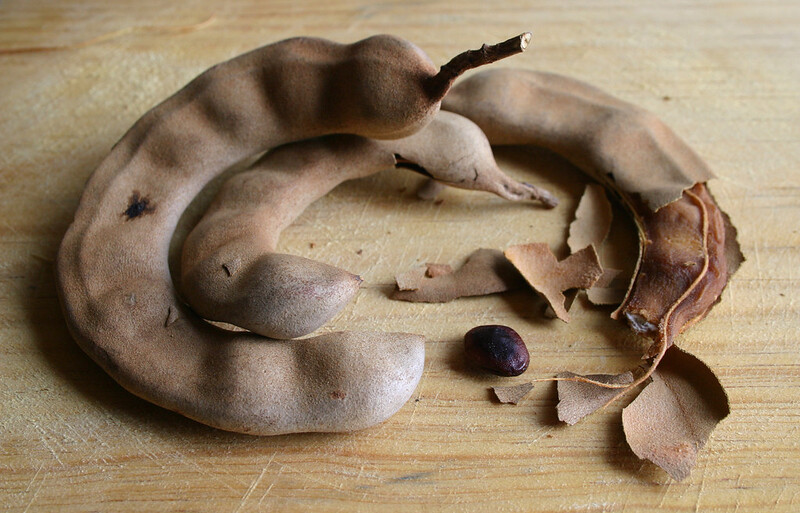
The tamarind is a tropical tree native to Sudan whose fruit is legumes.
When it’s ripe, the peel is removed to extract a brown, dark, shiny, and very acidic pulp surrounding the seed.
Tamarind water can be made from ripe fruit by extracting the pulp and mixing it with water and sugar.
This yields one of Mexico’s most delicious non-alcoholic drinks. The pulp is also sold in ready-to-use packages.
Tamarind is a popular ingredient in Indian cuisine. In Mexico, a country of great production and consumption, it is used to make sauces and sweets by mixing the pulp with sugar, salt, and chiles.
Tamarind is anti-inflammatory and diuretic and helps regulate blood sugar.
It counteracts the action of free radicals due to its high antioxidant content, which favors the appearance of skin and hair.
12. Chaya water with pineapple and orange
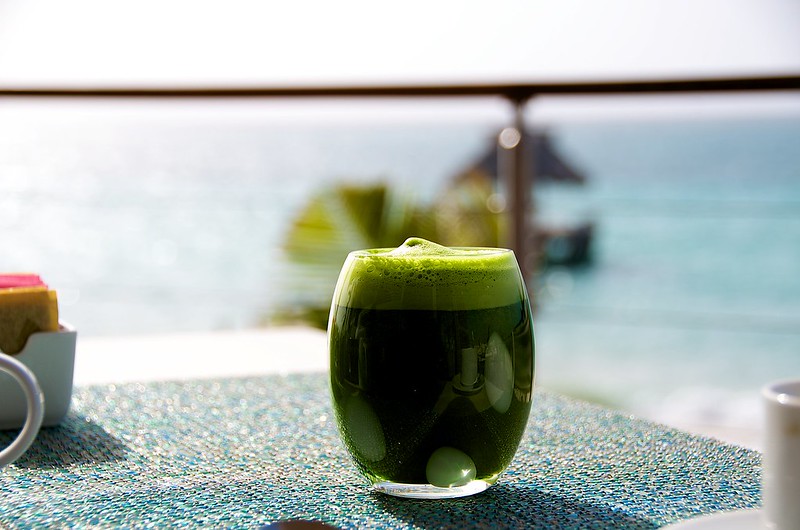
Agua de Chaya with pineapple and orange is one of the most delicious multi-ingredient Mexican beverages.
Chaya leaves, or spinach trees, are widely used in Mexico and Central America and are prepared in the same way as spinach leaves.
This water is made by blending pineapple chunks with chaya leaves and orange juice, sweetening the mixture with honey or sugar.
Chaya leaves are cardioprotective and rich in antioxidants.
In Yucatan cuisine, they are used in different dishes such as eggs with chaya, queen’s arm, and as an ingredient in tamales, empanadas and polcanes.
Chaya combines its nutritional and medicinal attributes with the vitamin, diuretic, and refreshing powers of pineapple and orange.
Mexican Atoles
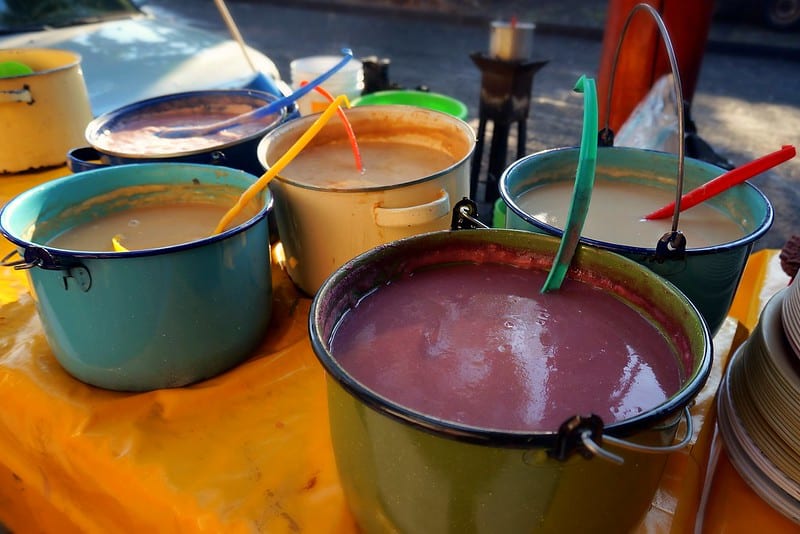
Atole or atol leads the list of Mexican beverages that originated in pre-Columbian times.
In its most basic form, an Atole is a corn stew with water sweetened with piloncillo, sugar, or honey.
Adding flavor, aroma, and strength to atole is common with spices, natural flavorings, and other ingredients, such as cocoa, milk, cinnamon, vanilla, orange leaves, and aniseed.
Atole is so common in Mexican kitchens that several commercial brands are flavored with chocolate, strawberry, pineapple, guava, mango, plum, coconut, and other fruits.

